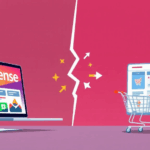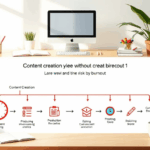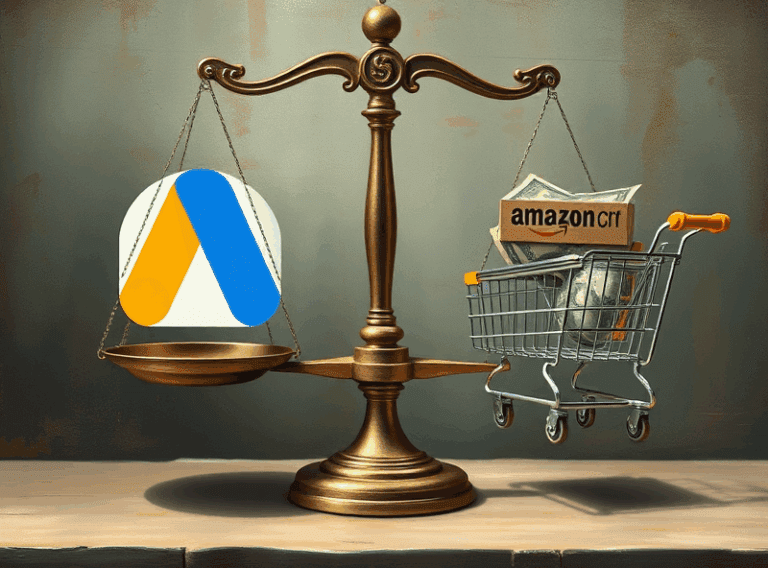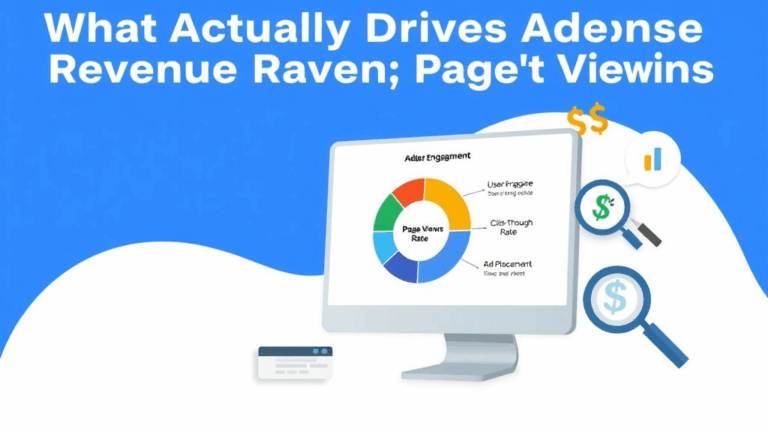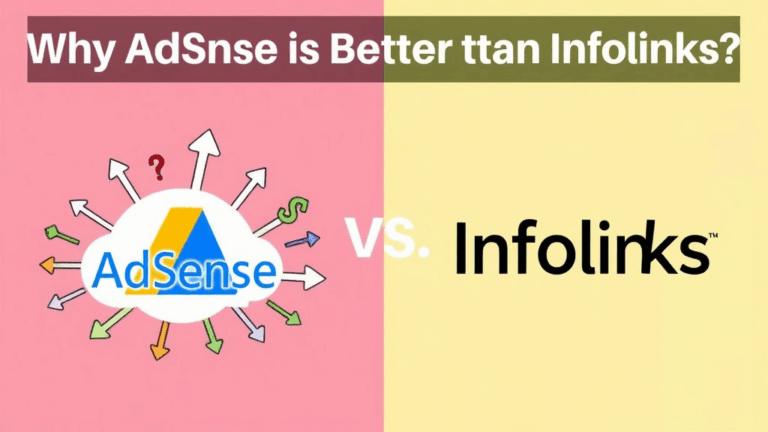Running AdSense on Print-on-Demand Sites Without Losing Your Mind
99% of Print-on-Demand Platforms Don’t Natively Support AdSense
Let’s just get this out of the way: Printful, Gelato, Gooten, whatever — none of these are designed with monetizable content pages in mind. They’re e-commerce utilities, not publishing platforms. If you’re trying to run Google AdSense on top of a Teespring storefront, you’re basically duct-taping two universes together.
The only viable path I’ve found is running a fully separate CMS (like WordPress, Ghost, Hugo, whatever your poison is) and embedding product links from the POD platform into that. You drive content-based traffic to your blog, and link users off to the store. But you can’t just iframe the store and expect AdSense to play nice. (It won’t. It’ll throw a fit. Sometimes literally: blank ads, weird auto-placement leakage, or that frustrating gray box that never populates.)
I once tried embedding a Shopify Lite buy button into an AdSense blog. Ads would intermittently refuse to load on the same post, only to work again five minutes later. Turns out the auto ads scanner got confused when it saw embedded e-commerce objects it couldn’t attribute — thought the page was heavily commercial, flagged the ad slots as potentially policy-violating. No documentation about that. Took me two weeks to figure it out by comparing Chrome devtools ad slot logs across versions.
AdSense Auto Ads Will Misbehave Near Embedded Product Galleries
This one caused four users to email me about “glitchy layout” in a single week. If you’re running Auto Ads and drop a grid of embedded Printify product images in the middle of a blog post, you might see ads floating in the dumbest spots — splitting button rows, sitting between image and caption, or worse, leaking into a div that’s supposed to be overflow:hidden.
This isn’t just bad CSS. The issue is AdSense’s page layout parser overestimating whitespace around dynamic elements created by scripts (like a print catalog widget that loads via JS). Even if your layout looks tight in source, AdSense doesn’t wait for JavaScript content to fully settle. Their crawler snapshots the early DOM render and bombs ad placements onto it.
Aha moment: Check this snippet from DevTools after a malformed auto ad drop under a Printify grid:
<ins class="adsbygoogle" style="display:block;margin:auto;height:90px;overflow:visible;position:absolute;top:-2000px;"></ins>
That top:-2000px wasn’t mine. That was AdSense failing to calculate a placement around a lazy-loaded product grid. The element floated way out of context, then jumped into view on mobile. Wipe auto ads and go manual wherever you expect JS-generated content.
Google AdSense Account Suspension Risk on Product-Heavy Content
So here’s something Google won’t say outright: if your content page starts looking too much like an online store — text-light, image-heavy, full of CTAs — it can initiate a policy warning or, worse, a limited ad serving issue. Back in 2022, I was experimenting with seasonal blog posts like “12 Funny Mugs You Can’t Unsee” (embedded Printful links, one per block). Woke up to an email about “low-value content with no original contribution”.
It wasn’t even affiliate spam. I wrote blurbs. But the ratio of commercial product embeds to actual text was apparently enough to hit some threshold. Now I inject a stub intro, include a weird anecdote or two, space the content with mini pulldowns or quotes. Basically, make it feel like a human yelling through the catalog:
This mug says I run on caffeine and rage. I’d buy it, but I spilled coffee on my last 3 laptops, so…
Weirdly, adding that kind of silliness gave me better RPM too. I assume users stayed longer because it didn’t feel like raw commerce. Google agreed. No more low-value flags since.
Embedded Storefronts Often Break Contextual Relevance
Rich media embeds from a print-on-demand widget inject tons of noise into the DOM: inline scripts, product titles, prices, image metadata, etc. So you write a detailed article on, say, fandom tropes in early 2000s anime — and your AdSense units show mattress ads, because two-thirds down the page is a grid of body pillow listings.
The AdSense crawler doesn’t have the context of your intent. Especially dangerous if you’re running Auto ads. I’ve seen contextual targeting go so off-base that holiday shopping gift guides loaded entirely with incontinence product ads. Why? Half the product titles had “comfort,” “soft,” and “adult” in them. That was it.
If you’re adding embedded catalogs, I’d strongly recommend wrapping them in a <div style="display:none"> until page load, and only then revealing them via JS. It gives the bot a chance to scrape the actual article text before product bloat clouds it. Not officially blessed, but in the wild, this reduces weird ad mismatches.
Match Ad Unit Styles to Your Store Colors — Carefully
One of my earlier mistakes: I copied the orange #FF6C37 from my Brandify hoodies over to my AdSense link colors. CTR went down. Again, no documentation, but after A/B testing I found that high-contrast link colors adjacent to similar-looking CTAs confuse mobile users. They don’t distinguish what’s an ad and what’s a button anymore, so they ignore both.
So what’s the middle ground? Keep ad color styles visually consistent with your blog layout, not your storefront brand palette. I keep three sets now:
- Neutral blue for informational posts with embedded chapters
- Muted greys when promoting physical goods
- Dark mode variants activated via CSS prefers-color-scheme
Also: test on Safari. AdSense color inheritance falls apart inside AMP wrappers and iOS iframe contexts. Found one case where my ad link color defaulted to bright purple (#800080) without explanation — traced it to a missing <meta name="theme-color">. That meta tag mysteriously sets the tone for some iOS render defaults. Not kidding.
The Nightmare of Revenue Tracking Segmentation in Connected Systems
Here’s where it gets extra crunchy. You run content on one domain, your print-on-demand store on another (maybe a subdomain, maybe a full decoupled setup). You want to know: am I actually making money from the traffic that AdSense brings in, or does everyone bounce before buying?
The default answer is: you have no idea. AdSense won’t tell you bounce-back behaviors or what % of visitors clicked into your POD store. Printful won’t tell you traffic origin outside UTMs, which get stripped by bots and Facebook scrapers. I eventually had to install split tracking.
- Custom UTM tags on outgoing links, attached dynamically via JS
- Hidden Google Analytics events triggered only on real user clicks
- GTM-based outbound link funneling into my GA4 conversion path
- Shopify’s pixel as backup, though it’s flaky on mobile Safari
It’s held together by duct tape and blood. (My blood.) But at least now I can correlate AdSense-referred visitors who hit certain product pages to sales volume with a +/-10% margin of fuzz.
Caching Behavior Can Interfere with Ad Rotation and Earnings
This is niche but has caused serious revenue damage. If you’re caching pages aggressively through Cloudflare or via a site optimizer (like WP Rocket or NitroPack), and you also use AdSense manual units with lazy loading or responsive dimensions, you can accidentally cache a malformed or partially loaded ad layout.
What happens next: every visitor loads that semi-broken layout, which might lack the necessary ad container height or iframe configuration. AdSense sees it as a rendered but non-visible ad, and doesn’t pay out — because technically, it loaded, but no impressions were counted.
I caught this through the AdSense diagnostics tab, which vaguely said: “Non-viewable impressions higher than normal on several pages.” Turns out my CDN was capturing a state where the ads hadn’t fully initialized yet. Running a cache bypass for AdSense pages fixed it. You can also force bypass via a cookie condition in Cloudflare. Something like:
if request.cookies["adsense_bypass"] == "1" then skip_cacheSet that cookie on anyone from a Google referrer and you’ll avoid caching the pre-ad state. Not documented anywhere — found it while digging through a Cloudflare community thread from 2019.






